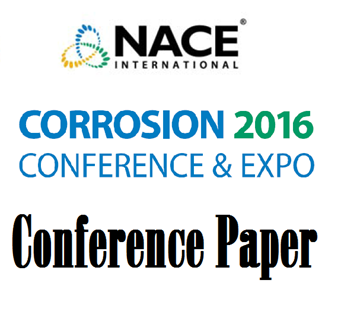Search
Products tagged with 'chloride'
View as
Sort by
Display
per page
00588 STAINLESS STEELS IN CHLORINE DIOXIDE ENVIRONMENTS - PREDICTING THE POSSIBILITY OF PITTING
Product Number:
51300-00588-SG
ISBN:
00588 2000 CP
Publication Date:
2000
$20.00
02265 CARBON PAINT ANODE FOR REINFORCED CONCRETE BRIDGES IN COASTAL ENVIRONMENTS
Product Number:
51300-02265-SG
ISBN:
02265 2002 CP
Publication Date:
2002
$20.00
02446 MICROBIOLOGICALLY INFLUENCED CORROSION FAILURE ANALYSIS OF 304L STAINLESS STEEL PIPING SYSTEM LEFT STAGNANT AFTER HYDROTESTING WITH CITY WATER
Product Number:
51300-02446-SG
ISBN:
02446 2002 CP
Publication Date:
2002
$20.00
06576 PREDICTION AND ASSESSMENT OF AMMONIUM BISULFIDE CORROSION UNDER REFINERY SOUR WATER SERVICE CONDITIONS
Product Number:
51300-06576-SG
ISBN:
06576 2006 CP
Publication Date:
2006
$20.00
51316-7083-The Role Of Local Chemistry Changes In Repassivation Of Localized Corrosion – A Review
Product Number:
51316-7083-SG
ISBN:
7083 2016 CP
Publication Date:
2016
$20.00
51316-7166-Corrosion of Nickel Alloys for Steam Generator Tubing of Pressurized Water Reactors
Product Number:
51316-7166-SG
ISBN:
7166 2016 CP
Publication Date:
2016
$20.00
51316-7170-Effect of Temperature on the Crevice Corrosion Resistance of Austenitic Stainless Steels
Product Number:
51316-7170-SG
ISBN:
7170 2016 CP
Publication Date:
2016
$20.00
51316-7199-Documented Evidence of Significant Metal Loss in Aluminum Crevice Corrosion
Product Number:
51316-7199-SG
ISBN:
7199 2016 CP
Publication Date:
2016
$20.00
51317--9518-Chloride Stress Cracking of an Austenitic Stainless Steel Pipe Fitting in a Hydroprocessing Unit
Product Number:
51317--9518-SG
ISBN:
9518 2017 CP
Publication Date:
2017
$20.00
51317--9676-Temperature Sensitivity of the Corrosion Performance of 316L in Concentrated Sweet Brines
Product Number:
51317--9676-SG
ISBN:
9676 2017 CP
Publication Date:
2017
$20.00
51317--9747-Recent Failures of 2205 Duplex Stainless Steel in FGD Scrubbers - Could They Have Been Avoided?
Product Number:
51317--9747-SG
ISBN:
9747 2017 CP
Publication Date:
2017
$20.00
51317--9760-Chemical Evaluation of Corrosion Product from Known Sources
Product Number:
51317--9760-SG
ISBN:
9760 2017 CP
Publication Date:
2017
$20.00












